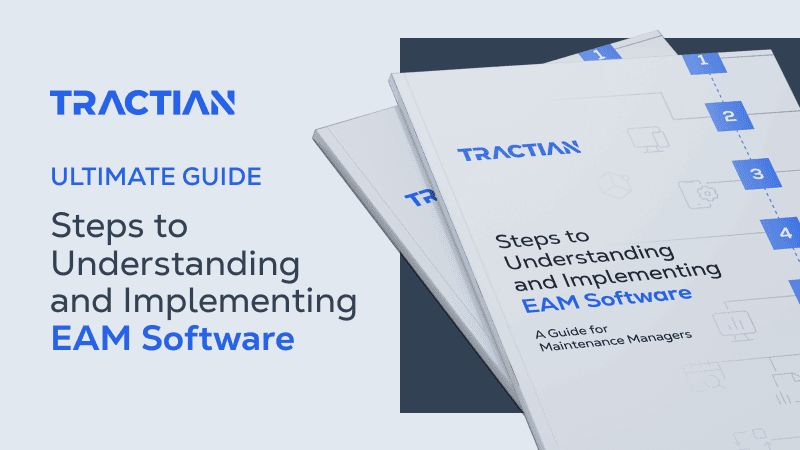Predictive maintenance is a proactive strategy that uses advanced technologies, such as artificial intelligence (AI), Internet of Things (IoT) sensors, and predictive analytics, to monitor equipment in real time.
This approach enables organizations to identify potential issues before they lead to unplanned downtime, helping improve operational efficiency and extend the lifespan of physical assets.
The Role of AI and IoT
AI enables predictive maintenance by analyzing vast amounts of historical data and real-time insights to forecast equipment failures accurately.
IoT sensors monitor key conditions such as temperature, vibration, and pressure, delivering real-time insights to detect anomalies early.
Together, AI and IoT form a powerful system that improves decision-making and lowers maintenance costs.
Industry Applications
For example, predictive maintenance is critical in the food industry in monitoring equipment such as mixers, mills, and ovens, allowing manufacturers to detect potential failures early and minimize production downtime.
IoT sensors and predictive analytics have significantly reduced unplanned downtime, enabling manufacturers to optimize production schedules and prevent costly equipment failures. This proactive approach improves operational efficiency and extends the lifespan of critical assets.
Algorithms and Tools
Predictive maintenance relies on advanced tools and algorithms to interpret sensor data and identify potential failures.
These algorithms include machine learning models and statistical methods designed to process large datasets efficiently.
Clustering algorithms group similar equipment based on operating conditions, while regression models estimate the time to failure for critical components.
More advanced techniques, such as deep learning, improve accuracy by recognizing complex patterns in sensor data, making predictive maintenance adaptable to a wide range of industrial equipment.
Why is Predictive Maintenance Important?
Predictive maintenance is integral to improving operational efficiency and reducing operating costs.
By analyzing historical data and real-time sensor readings, businesses can avoid unexpected equipment failures and unplanned downtime, leading to significant cost savings.
Predictive maintenance strategies also optimize maintenance schedules, improve productivity, and extend equipment lifespan.
Additionally, predictive maintenance ensures better safety procedures and compliance, allowing maintenance teams to focus on high-value tasks.
What is Statistical-Based Preventive Maintenance?
Statistical-based preventive maintenance relies on historical data and statistical models to determine the optimal timing for maintenance tasks.
Unlike predictive maintenance, which incorporates real-time data, this approach uses past performance trends to anticipate maintenance needs. While less precise, it remains a cost-effective strategy for many organizations.
It also serves as a foundation for more advanced predictive maintenance programs by leveraging time-based insights.
What is the Difference Between Maintenance and Repair?
Maintenance consists of scheduled activities designed to prevent failures and extend equipment lifespan. Common tasks include lubrication, calibration, and system checks.
Repair, on the other hand, involves restoring equipment after a failure has already occurred.
Predictive maintenance bridges the gap by using data-driven insights to anticipate and prevent failures, reducing the need for corrective maintenance and unplanned repair.
Benefits of Predictive Maintenance
Enhances Equipment Reliability
By continuously monitoring machinery conditions and leveraging predictive models, businesses can detect early signs of wear or malfunction in critical equipment.
This prevents unexpected breakdowns in mining drills, conveyors, chemical reactors, and processing units, ensuring uninterrupted operations.
Minimizes Unplanned Downtime
Predictive maintenance reduces costly unplanned downtime by identifying potential failures before they escalate.
Proactive maintenance is essential in industries like mining and chemical manufacturing, where unexpected equipment failures can halt production and cause significant financial losses.
Optimizes Energy Efficiency
Monitoring high-speed rotating equipment, heat exchangers, and other key systems ensures optimal performance and prevents excessive energy consumption.
Predictive maintenance helps companies reduce mining and chemical processing plant operating costs, improving sustainability and energy efficiency.
Extends Equipment Lifespan
By preventing unexpected mechanical failures, predictive maintenance extends the lifespan of high-value industrial assets such as crushers, kilns, mixers, and chemical reactors.
This proactive approach minimizes wear and tear, reducing the need for costly replacements.
Enhances Workplace Safety
Faulty equipment in mining and chemical plants poses serious safety risks, from malfunctions to hazardous material leaks.
Predictive maintenance ensures that safety-critical systems-such as pressure valves, ventilation systems, and conveyor belts-remain in optimal condition, reducing the risk of accidents.
Ensures Regulatory Compliance
Industries like mining and chemical manufacturing must comply with strict regulatory standards for equipment safety and environmental impact.
Predictive maintenance helps organizations stay compliant by ensuring scheduled inspections and maintenance, reducing the risk of violations and fines.
Examples of Predictive Maintenance Use Cases
Food & Beverage
Predictive maintenance helps food and beverage manufacturers maintain critical equipment such as mixers, mills, and ovens.
Analyzing sensor data prevents unplanned downtime, ensuring consistent production and product quality while reducing waste.
Paper & Forest
Predictive maintenance tools monitor essential assets like paper machines, conveyors, and wood processing equipment.
By detecting early signs of wear, they help prevent unexpected failures, optimize maintenance schedules, and improve operational efficiency.
Consumer Goods
In the consumer goods industry, predictive maintenance ensures the reliability of production lines, packaging machinery, and automated systems.
Using real-time condition monitoring, companies can reduce equipment failures, maintain high production output, and improve supply chain efficiency.
Types of Predictive Maintenance
Data analysis is fundamental to predictive maintenance. It enables organizations to anticipate faults and failures before they disrupt operations.
There are multiple methods to collect and analyze data, one of which is Maintenance Data Systems Analysis (MDSA). This process involves collecting, monitoring, auditing, evaluating, and analyzing data from a Computerized Maintenance Management System (CMMS) to optimize maintenance operations.
Beyond MDSA, the following are the seven primary techniques used in predictive maintenance:
Oil Analysis
Oil analysis provides insights into both lubricant condition and overall equipment health.
By monitoring oil contaminants, assessing wear patterns, and evaluating additive levels, maintenance teams can determine the optimal time for oil replacement.
This technique helps identify pollutants, gear failures, oxidation, misalignment, additive degradation, and mechanical component wear.
Thermography
Thermography is a graph or image representation of infrared radiation emitted by equipment, producing thermal images that reveal temperature variations.
These images help identify overheating components, preventing potential failures and improving condition monitoring.
Acoustic Analysis
Acoustic analysis detects anomalies in machinery by analyzing sound patterns.
This technique helps identify issues such as bearing wear, leaks, and other mechanical irregularities.
Vibration Analysis
Vibration analysis plays a key role in detecting mechanical failures and diagnosing underlying defects that could halt production.
By analyzing vibrations, maintenance teams can detect mass unbalance, shaft misalignment, bearing wear, structural weaknesses, and looeness-all of which impact equipment performance.
Ultrasound Analysis
Ultrasound analysis amplifies high-frequency sound waves, making them detectable by the human auditory system.
This technique is particularly effective for identifying gas leaks in transportation systems, electrical current leaks, and mechanical defects.
Current and Voltage Sensors
These sensors monitor electrical equipment for irregularities, ensuring reliable operation and preventing electrical failures.
Crack Analysis
Crack analysis, conducted using magnetic particle testing, is an industrial technique to detect surface and subsurface defects in high-stress components.
This method identifies cracks, cold joints, double lamination, lack of penetration, folds, segregations, and other structural anomalies that could lead to equipment failure.
Predictive Maintenance vs. Other Maintenance Types
Predictive vs. Preventive Maintenance
Predictive maintenance relies on real-time data to identify and address specific equipment issues, while preventive maintenance follows a fixed schedule based on time or usage intervals.
Unlike preventive maintenance, predictive maintenance is more dynamic and adaptable, reducing unnecessary maintenance tasks and optimizing resource allocation.

Predictive vs. Reactive Maintenance
Reactive maintenance focuses on repairing equipment after a failure occurs, whereas predictive maintenance aims to prevent failures before they happen.
By proactively identifying issues, predictive maintenance helps reduce unplanned downtime and lower maintenance costs.
Predictive vs. Condition-Based Maintenance
Condition-based maintenance monitors the current state of equipment, but predictive maintenance goes a step further.
By using predictive algorithms and machine learning models, it forecasts future equipment failures, allowing for more proactive decision-making and optimized maintenance schedules.
Offline and Online Predictive Maintenance
Predictive maintenance monitors assets through two primary methods: offline and online.
- Offline Predictive Maintenance relies on manual data collection using sensors, requiring maintenance teams to perform on-site inspections.
- Online Predictive Maintenance uses Artificial Intelligence (AI) and Internet of Things (IoT) sensors to collect data continuously. By leveraging machine learning algorithms, this approach reduces the need for physical asset inspections, allowing maintenance professionals to focus on higher-value tasks.
When is Predictive Maintenance Suitable?
Predictive maintenance is best suited for industries that rely on high-value assets and critical operations.
It is particularly effective for equipment with measurable operating conditions that can be monitored using IoT sensors and predictive maintenance technologies.
Some industries benefiting from PM include manufacturing, automotive, food & beverage, and energy sectors.
Advantages of Predictive Maintenance
- Reduces downtime and unnecessary maintenance costs.
- Improves asset reliability and performance.
- Extends time between failures (MTBF).
- Enhances safety and ensures regulatory compliance.
- Supports data-driven decision-making and provides real-time insights.
However, one challenge of predictive maintenance is integrating existing maintenance systems with legacy equipment.
How is Predictive Maintenance Performed?
1. Collect Data: Deploy IoT sensors to monitor equipment performance and gather real-time sensor data.
2. Analyze Data: Use predictive algorithms to identify patterns and detect early signs of equipment failures.
3. Implement Predictive Models: Apply machine learning (ML) and predictive maintenance AI to refine maintenance strategies.
4. Take Action: Schedule maintenance work orders based on real-time insights and failure predictions.
Steps to Implement a Predictive Maintenance Program
1. Define Goals and Objectives - Establish targets, such as reducing downtime or improving asset reliability.
2. Identify Critical Equipment and Data Sources - Determine which physical assets require monitoring.
3. Install IoT Sensors and Predictive Maintenance Tools - Collect real-time data for analysis.
4. Train Maintenance Teams - Educate personnel on predictive maintenance AI and technologies to ensure effective implementation.
5. Integrate Predictive Maintenance into Existing Systems - Connect with Enterprise Resource Planning (ERP) and CMMS to centralize data and streamline maintenance workflows.
How to Implement Predictive Maintenance with CMMS Software
CMMS software streamlines predictive maintenance programs by automating work orders, tracking historical data, and delivering real-time insights.
Integration with IoT sensors and predictive maintenance systems ensures a seamless flow of equipment data, allowing maintenance teams to monitor assets and reduce downtime efficiently.
Additionally, CMMS platforms support condition monitoring and data analysis, enabling better decision-making for maintenance operations.
How Can Predictive Maintenance be Integrated into Existing Enterprise Systems?
Predictive maintenance integrates with ERP and CMMS platforms to centralize data and enhance maintenance decision-making.
Organizations can implement cost-effective and efficient maintenance strategies using AI-driven predictive maintenance solutions.
These integrations allow predictive maintenance to work alongside other business processes, such as inventory management and resource allocation, ensuring a holistic approach to asset management.
Challenges of Implementing Predictive Maintenance
Implementing predictive maintenance offers significant advantages but also comes with its share of challenges that businesses must address to succeed.
High Setup Costs and Complex Implementation
The initial investment to install IoT sensors, integrate predictive maintenance software, and train personnel can be substantial. This can pose significant challenges for small and medium-sized enterprises (SMEs).
Integration with Legacy Systems
Many organizations still rely on outdated equipment and legacy software that may not support modern predictive maintenance technologies. This incompatibility often leads to additional expenses for system upgrades or replacements.
Data Accuracy and Reliability
The effectiveness of predictive maintenance models depends on accurate and reliable data from IoT sensors and other sources. Sensor calibration issues, data corruption, or inconsistent data collection can reduce the accuracy of predictive analytics.
Specialized Knowledge Requirements
Maintenance teams must be familiar with machine learning algorithms, predictive analytics, and IoT technologies to use predictive maintenance systems effectively. This often requires comprehensive training and ongoing technical support.
Scalability
Expanding predictive maintenance solutions across multiple facilities or regions can be complex. Organizations must standardize data collection methods, system configurations, and team training to ensure consistency.
Cultural Resistance
Shifting from traditional maintenance strategies to predictive maintenance often faces resistance from employees accustomed to older workflows. Deploying effective change management strategies is essential to drive adoption.
Cybersecurity Risks
IoT devices and connected systems introduce potential vulnerabilities to cyberattacks. Organizations must implement robust security measures to protect sensitive operational data from cyber threats.
How Can Predictive Maintenance be Integrated into Existing Enterprise Systems?
Businesses can ensure the successful implementation and long-term benefits of predictive maintenance strategies by addressing challenges proactively.
The emergence of predictive maintenance has come and gone. It's moved beyond novelty and trend, and soon, competitive advantage will be unattainable without it. Yet, too often, companies hesitate to implement it, unsure of the cost, complexity, and effort required to make it work.
Tractian changes that. By combining AI-driven insights, real-time condition monitoring, and a streamlined deployment process, we make predictive maintenance not only accessible but instantly valuable.
With up to 43% less downtime guaranteed, Tractian doesn’t just prevent failures-it eliminates unnecessary costs, optimizes resource allocation, and ensures that maintenance becomes a driver of profitability rather than a cost center.
Implementation is fast and seamless, and our plug-and-play IoT sensors integrate effortlessly with your existing systems. From CMMS to ERP and anywhere between, a smooth transition without operational disruptions is ensured.
Whether starting with a pilot project or scaling across multiple sites, our platform adapts to your needs, growing alongside your business.
More than just software, Tractian is your Industrial Copilot. With Tractian, you're never left alone to implement or integrate these systems.
Our team of maintenance and reliability experts works alongside you, offering hands-on support. Your team gets immediate value from onboarding to advanced data analysis at every stage without the steep learning curve.
And with ISO 27001 and SOC 2 Type II certifications, you can trust that your data remains protected while being available in real time-securely, from anywhere.
Predictive maintenance should be easy, scalable, and built for impact. That’s what Tractian delivers.
The question isn’t whether your business can implement it. Instead, it's how soon do you want to start seeing the results?


